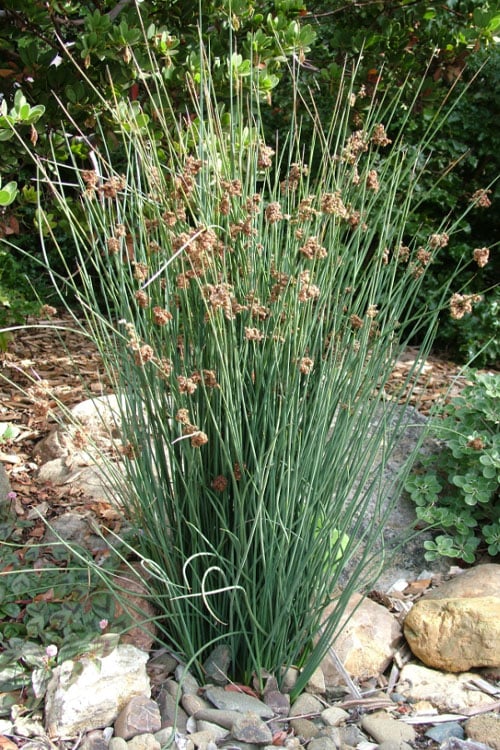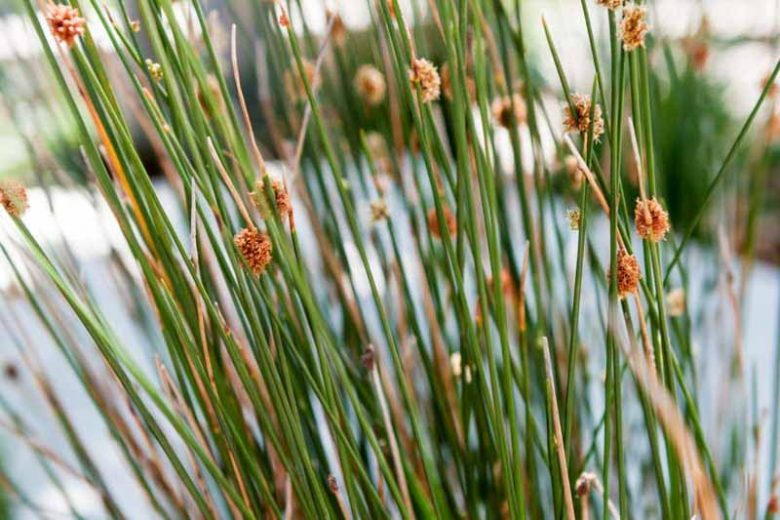Juncus patens: The California Gray Rush

Juncus patens, also known as California gray rush or spreading rush, is a native perennial rush species thriving in wetland habitats across California and western North America.
With its distinctive upright stems and delicate, feathery inflorescences, Juncus patens adds beauty and ecological value to riparian zones, marshes, and other wetland ecosystems.
In this article, we will explore the various aspects of Juncus patens, from its botanical description to its conservation status and care requirements.
Botanical Description
Is a member of the Juncaceae family and is characterized by its clumping growth habit and cylindrical, hollow stems.
The stems can grow anywhere from 1 to 3 feet (30 to 90 cm) tall and are typically green or grayish-green in color.
The leaves are reduced to sheaths at the base of the stem and are inconspicuous compared to the showy inflorescences.
The flowers of Juncus patens are small and inconspicuous, arranged in loose clusters at the ends of the stems.
They are typically greenish or brownish in color and appear in late spring to early summer.
Habitat and Distribution
It can usually be found in wetland habitats such as marshes, swamps, stream banks, and lake shores.
It prefers areas with moist to wet soils and full to partial sun exposure.
Is native to western North America, where it is found from British Columbia in Canada down to California in the United States.
It is particularly common in coastal areas and along riverbanks, where it plays a crucial role in stabilizing soil and preventing erosion.
Life Cycle and Phenology
As a perennial plant, Juncus patens has a long life cycle with gradual growth and reproduction.
It typically begins growing in early spring, with new shoots emerging from the base of the plant.
Flowering occurs in late spring to early summer, when the plant produces its characteristic inflorescences.
The flowers rely on wind or insects for pollination, yielding capsule-like fruits containing seeds dispersed by wind, water, or animals.
Ecological and Cultural Importance
Juncus patens plays a vital ecological role in wetland ecosystems, where it helps to stabilize soil, filter water, and provide habitat for a variety of wildlife species.
The dense clumps of Juncus patens provide cover and nesting sites for birds, amphibians, and small mammals, while the plant's roots help to prevent erosion and create habitat for aquatic organisms.
In addition to its ecological importance, Juncus patens also has cultural significance for indigenous peoples of North America, who have traditionally used the plant for weaving, thatching, and other utilitarian purposes.
Conservation and Threats
Although not presently classified as threatened or endangered, wetland loss and degradation pose significant threats to Juncus patens populations.
Urbanization, agriculture, and invasive species encroachment exacerbate these risks.
Furthermore, climate change is anticipated to disrupt wetland ecosystems, altering precipitation patterns and intensifying droughts and floods.
Conservation efforts focused on habitat restoration, invasive species control, and land preservation are essential for ensuring the long-term survival of Juncus patens and other wetland species.

Caring for Juncus patens
Sunlight
Plant Juncus patens in a location that receives full to partial sunlight.
While it can tolerate some shade, it will grow best and produce the most flowers in full sun.
Watering
Juncus patens prefers moist to wet soils and should be watered regularly, especially during dry periods.
Avoid allowing the soil to dry out completely, as this can stress the plant and reduce its vigor.
Soil
This plant prefers well-drained, sandy or loamy soil with a neutral to slightly acidic pH.
Amend heavy clay or compacted soil with organic matter such as compost to improve drainage and fertility.
Mulching
Apply a layer of organic mulch, such as shredded bark or wood chips, around the base of the plant to help retain soil moisture and suppress weed growth.
Keep the mulch pulled back several inches from the stems to prevent rot.
Pruning
This plant only requires minimal pruning.
Remove any dead or damaged stems as needed to maintain the plant's appearance and health.
By following these care guidelines, you can cultivate healthy and vibrant Juncus patens plants in your garden or wetland restoration project, creating habitat for wildlife and contributing to the conservation of these important ecosystems.
Whether used for erosion control, habitat restoration, or simply as a decorative accent in the garden, Juncus patens is sure to impress with its graceful appearance and ecological value.
Leave a Reply
You must be logged in to post a comment.